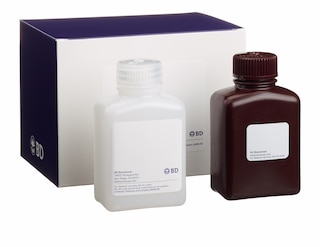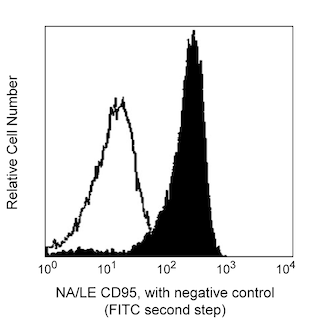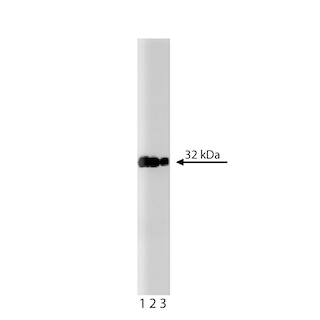-
Reagents
- Flow Cytometry Reagents
-
Western Blotting and Molecular Reagents
- Immunoassay Reagents
-
Single-Cell Multiomics Reagents
- BD® AbSeq Assay
- BD Rhapsody™ Accessory Kits
- BD® Single-Cell Multiplexing Kit
- BD Rhapsody™ Targeted mRNA Kits
- BD Rhapsody™ Whole Transcriptome Analysis (WTA) Amplification Kit
- BD Rhapsody™ TCR/BCR Profiling Assays for Human and Mouse
- BD® OMICS-Guard Sample Preservation Buffer
- BD Rhapsody™ ATAC-Seq Assays
-
Functional Assays
-
Microscopy and Imaging Reagents
-
Cell Preparation and Separation Reagents
-
Training
- Flow Cytometry Basic Training
-
Product-Based Training
- BD FACSDiscover™ S8 Cell Sorter Product Training
- Accuri C6 Plus Product-Based Training
- FACSAria Product Based Training
- FACSCanto Product-Based Training
- FACSLyric Product-Based Training
- FACSMelody Product-Based Training
- FACSymphony Product-Based Training
- HTS Product-Based Training
- LSRFortessa Product-Based Training
- Advanced Training
-
- BD® AbSeq Assay
- BD Rhapsody™ Accessory Kits
- BD® Single-Cell Multiplexing Kit
- BD Rhapsody™ Targeted mRNA Kits
- BD Rhapsody™ Whole Transcriptome Analysis (WTA) Amplification Kit
- BD Rhapsody™ TCR/BCR Profiling Assays for Human and Mouse
- BD® OMICS-Guard Sample Preservation Buffer
- BD Rhapsody™ ATAC-Seq Assays
-
- BD FACSDiscover™ S8 Cell Sorter Product Training
- Accuri C6 Plus Product-Based Training
- FACSAria Product Based Training
- FACSCanto Product-Based Training
- FACSLyric Product-Based Training
- FACSMelody Product-Based Training
- FACSymphony Product-Based Training
- HTS Product-Based Training
- LSRFortessa Product-Based Training
- United States (English)
-
Change country/language
Old Browser
This page has been recently translated and is available in French now.
Looks like you're visiting us from {countryName}.
Would you like to stay on the current country site or be switched to your country?





Immunoprecipitation/Western blot analysis of caspase-3 from apoptotic and non-apoptotic cell lysates. Jurkat cells (Human T-cell leukemia; ATCC TIB-152) were left untreated (left panel) or were treated with 6 µM camptothecin for 5 hr to induce apoptosis (right panel). Immunoprecipitation: Cell lysates were immunoprecipitated with 0.25 - 2 µg/ml of the rabbit anti- active caspase-3 antibody [clone C92-605, lanes 1 and 8 (2 µg), lanes 2 and 9, (1 µg), lanes 3 and 10 (0.5 µg), and lanes 4 and 11 (0.25 µg)], 1 - 2 µg/ml of a mAb recognizing both pro and active caspase-3 (Cat. No. 610322), lanes 5 and 12 (2 µg), lanes 6 and 13 (1 µg)] or 1 µg/ml of a rabbit IgG isotype control [Jackson Immunoresearch (Cat. No. 011-00000-3), lanes 7 and 14]. Western blot: Caspase-3 was detected by western blot analysis with an antibody that recognizes both pro- (32 kD) and active (20 and 17 kD, reflecting the presence or absence of the caspase-3 pro-domain) caspase-3 [lanes 1-14]. The results also show that the rabbit anti- active caspase-3 antibody (clone C92-605) immunoprecipitated only the active form of caspase-3 (lanes 8-11) as compared to the mouse anti-human caspase-3 antibody (Cat. No. 610322) which immunoprecipitated both the pro and active forms of caspase-3 (lanes 12 and 13). Bands may be observable at ~25 kD and ~55-60 kD which represent the light and heavy chains, respectively, of IgG used for the immunoprecipitation.



BD Pharmingen™ Purified Rabbit Anti- Active Caspase-3

BD Pharmingen™ Purified Rabbit Anti- Active Caspase-3

Regulatory Status Legend
Any use of products other than the permitted use without the express written authorization of Becton, Dickinson and Company is strictly prohibited.
Preparation And Storage
Recommended Assay Procedures
Bioimaging: Please refer to http://www.bdbiosciences.com/support/resources/bioimaging/index.jsp
Product Notices
- Since applications vary, each investigator should titrate the reagent to obtain optimal results.
- Please refer to www.bdbiosciences.com/us/s/resources for technical protocols.
- Caution: Sodium azide yields highly toxic hydrazoic acid under acidic conditions. Dilute azide compounds in running water before discarding to avoid accumulation of potentially explosive deposits in plumbing.
Companion Products



The caspase family of cysteine proteases plays a key role in apoptosis and inflammation. Caspase-3 is a key protease that is activated during the early stages of apoptosis and, like other members of the caspase family, is synthesized as an inactive pro-enzyme that is processed in cells undergoing apoptosis by self-proteolysis and/or cleavage by another protease. The processed forms of caspases consist of large (17-22 kDa) and small (10-12 kDa) subunits which associate to form an active enzyme. Active caspase-3, a marker for cells undergoing apoptosis, consists of a heterodimer of 17 and 12 kDa subunits which is derived from the 32 kDa pro-enzyme. Active caspase-3 proteolytically cleaves and activates other caspases, as well as relevant targets in the cytoplasm, e.g., D4-GDI and Bcl-2, and in the nucleus (e.g. PARP). This antibody has been reported to specifically recognize the active form of caspase-3 in human and mouse cells. It has not been reported to recognize the pro-enzyme form of caspase-3.
Development References (3)
-
Dai C, Krantz SB. Interferon gamma induces upregulation and activation of caspases 1, 3, and 8 to produce apoptosis in human erythroid progenitor cells. Blood. 1999; 93(10):3309-3316. (Biology). View Reference
-
Fujita N, Tsuruo T. Involvement of Bcl-2 cleavage in the acceleration of VP-16-induced U937 cell apoptosis. Biochem Biophys Res Commun. 1998; 246(2):484-488. (Biology). View Reference
-
Thornberry NA, Lazebnik Y. Caspases: enemies within. Science. 1998; 281(5381):1312-1316. (Biology). View Reference
Please refer to Support Documents for Quality Certificates
Global - Refer to manufacturer's instructions for use and related User Manuals and Technical data sheets before using this products as described
Comparisons, where applicable, are made against older BD Technology, manual methods or are general performance claims. Comparisons are not made against non-BD technologies, unless otherwise noted.
For Research Use Only. Not for use in diagnostic or therapeutic procedures.
Report a Site Issue
This form is intended to help us improve our website experience. For other support, please visit our Contact Us page.